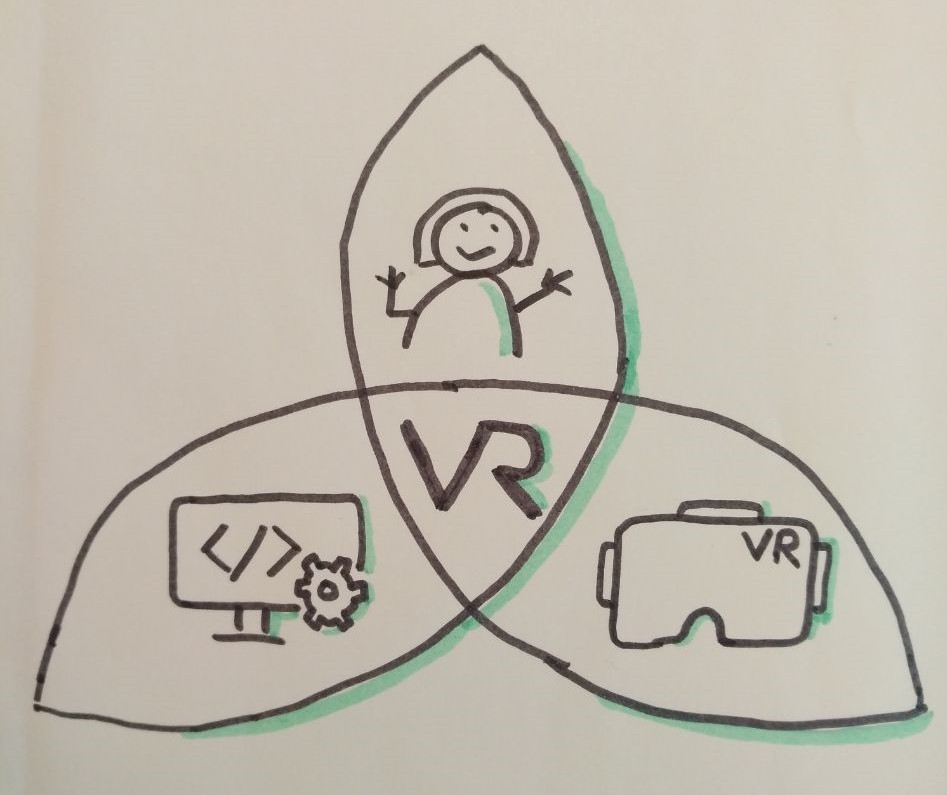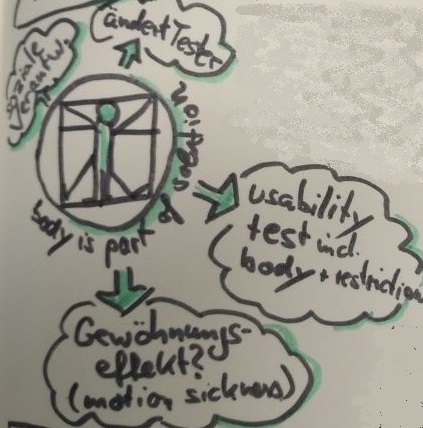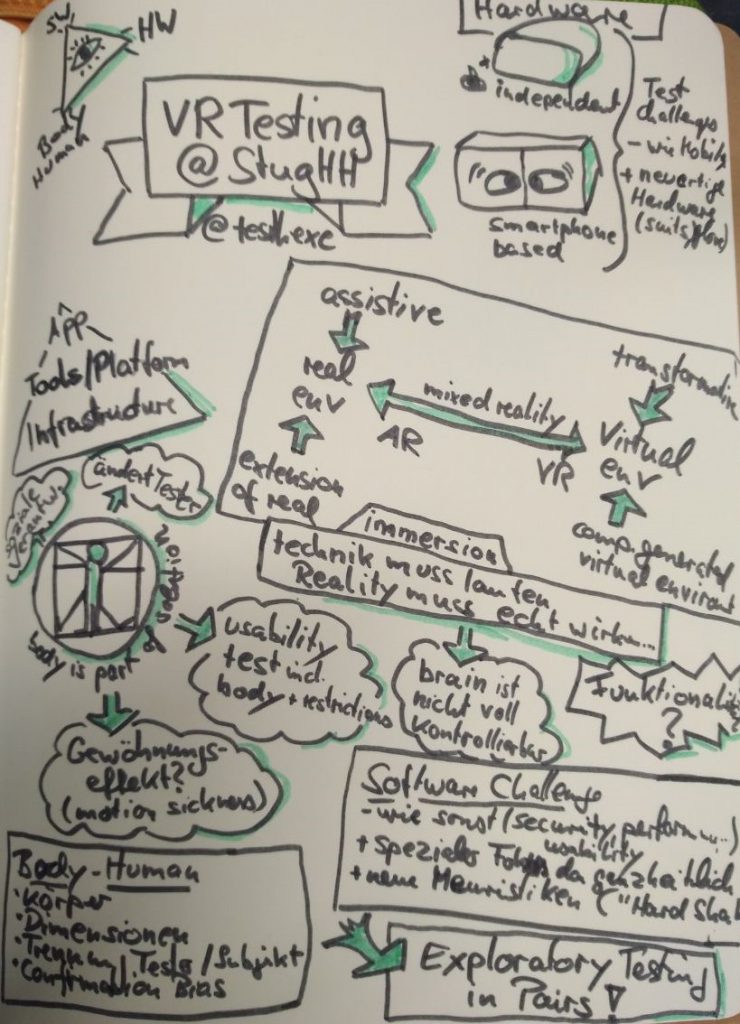Being educated in a catholic school, I remember what the essence of the Christian doctrine of the Trinity is: The three Persons are distinct, yet are one “substance, essence or nature”. Last StugHH event we learned about another trinity: Virtual reality as essence of hardware, software and human (body and mind).
The Talk – Trinity in VR?

Our speaker Maik Nogens gave us a short overview on what virtual (and augmented) reality is about, showing a few nice images. I guess virtual reality is all about visualization… While augmented reality aims at assisting human tasks in a real environment, Virtual reality (VR) is aimed at transforming reality and creating an artificial experience. Key is, that the user is meant to immerse into a computer-generated virtual environment.
Testing the hardware in VR obviously depends on the type of hardware. To a certain extent you can reuse the knowledge from mobile testing, including device fragmentation, battery consumption, heat …. There is not much to add to Daniel Knott’s knowledge base here. However, there is not yet much testing experience on tracker hardware, wearing comfort, or new hardware concepts like gloves or suits.
Testing the software includes all you know: functionality, performance, security (!), usability, … but you might have to develop new heuristics (“hard shake”) or add other criteria for “end to end” tests.

For both of the before, you can elaborate much more. But the emphasis of Maik’s talk was about the human and how everything only together unveils its real nature. Including the human as part of the test object, you have to consider also height (VR objects. vs. persons in VR), skin (rashes), hair (straps), eyes (glasses, focus, seeing handicaps), hearing (deaf, tinnitus), hands (left, right, none), weight (of hardware). Also, the person’s sense of balance has a high impact, as some people test to easily be motion sick. As the human is immersed into the virtual world, the mind starts becoming important: hormones, distraction, fears, memories and emotions are not only different with every person but can also in combination lead to different results. Last but not least, the human being part of the test object means that there are also social/psychological questions have to be considered in order to tell if the VR is “good”: is there any danger of social harassment? Is there any danger of “bad influence” and how judges what is bad?
Fragmentaion all over the Place…
Apart from all of the above, you have to adjust the way you test. Low level tests might be easier, especially for SW and HW and combination. However, the “manual” test gets way more complex: As the human is part of the test object, she cannot be the tester herself. Exploratory testing in pairs can remediate some of the dangers, but there is more organization to be done: not only the devices are fragmented, but also the humans…
Still Feeling Restless
In the end I definitely was shocked. Not only what (negative and positive) impact virtual reality can have on the user, but also, how complex that testing would be.

The “top of the VR testing pyramid” would be the test of social impact. How can we handle that? My first guess would be to use the methods of psychological or social research. And that does take many humans as test objects. And a lot of effort. Would that be taken? And in this context, the question of ethics is as relevant: does the VR user immerse into socially accepted worlds? Will she be “treated” nicely? How to avoid harassment? How to handle the reduced respect to others just because of the anonymity?
The next issue would be the philosophical question “what is truth?” There is no test oracle. Only patterns of acceptance. Sure, some lower level aspects can be tested, just to ensure the planned functionality of the platform, hardware, software.
But many of the virtual realities do change with the users, so the platform might be misused. You could test maybe some functionality that is meant to ensure some ethical standards, but you also have to add some monitoring functionality and test that.
You can see from my sketch notes, that I got no clear picture of where to go from here. But it is a start – start to understand. Thanks a lot to Maik to get me thinking.
Learn and be Aware!
Similar to testing of artificial intelligence the quality of a VR app very much depends on the fact that designers, implementers, quality people are conscious about what they do. Learn about the dangers and benefits of VR and include that into your work. For now, I have no more advice, but look out for opportunities to practically test yourselves some VR application. Go for it!
